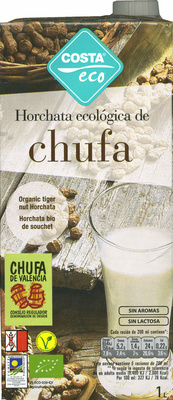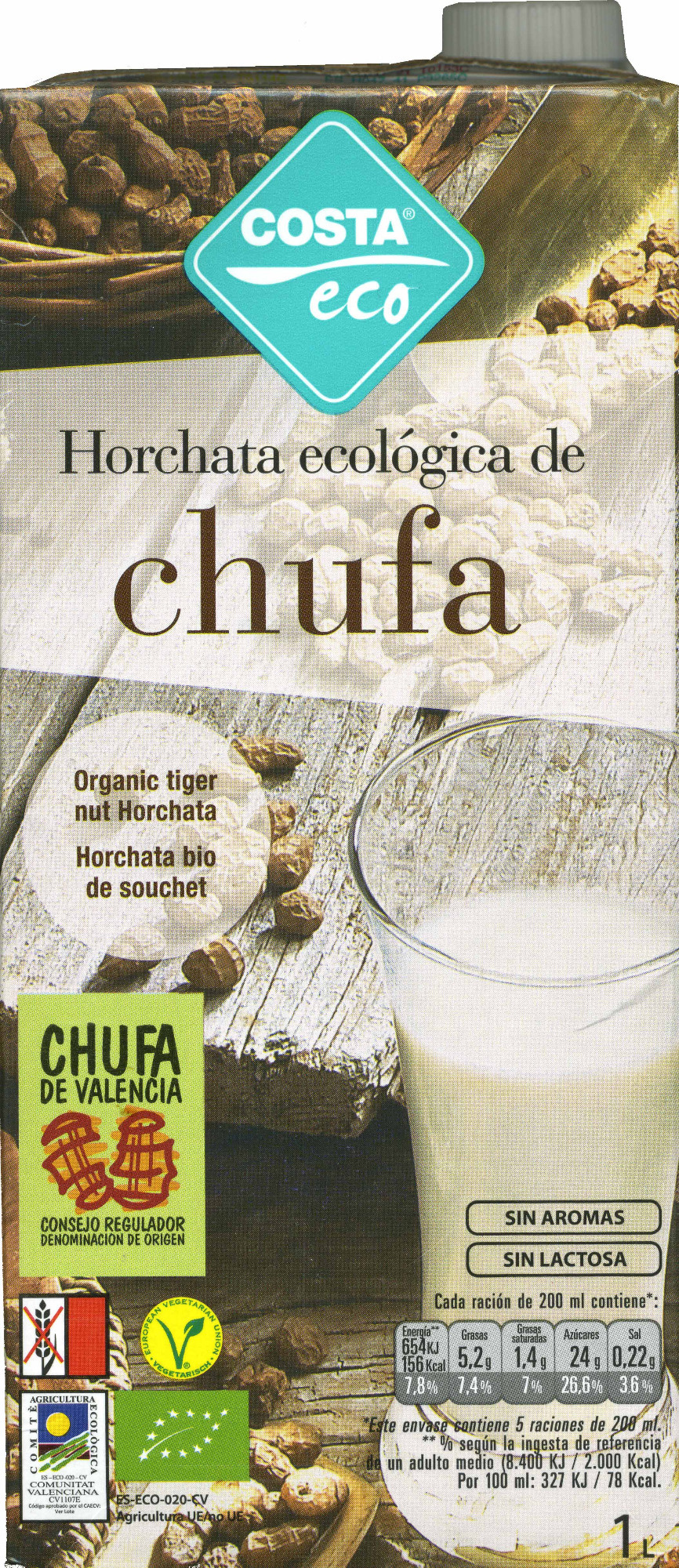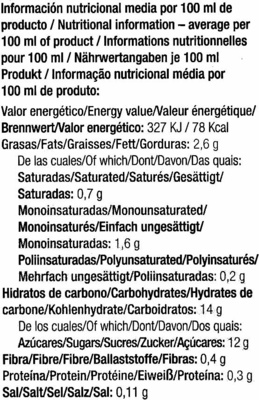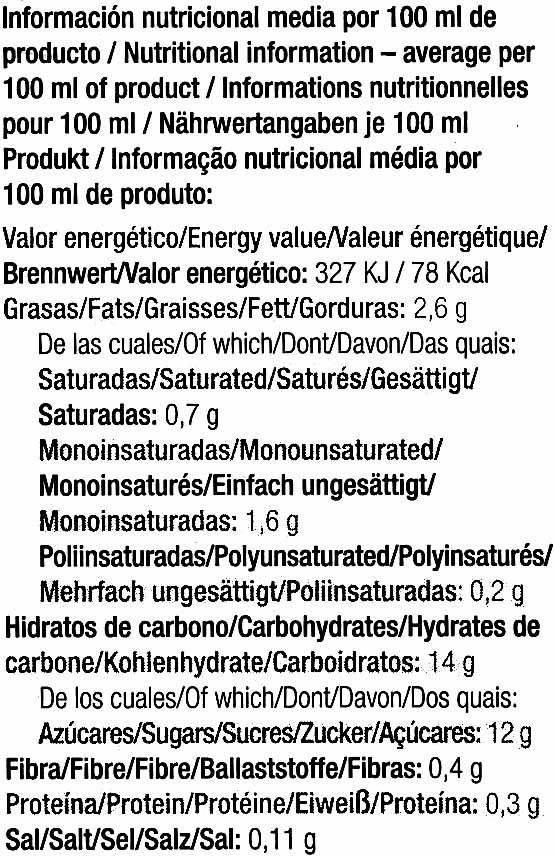Horchata ecológica de chufa - Costa Eco - 1 l
Aquesta pàgina del producte no està completa. Podeu ajudar a completar-la editant-la i afegint-hi més dades a partir de les fotos ja disponibles, o fent-ne més amb l'aplicació de androide o iPhone / iPad. Gràcies!
×
Codi de barres: 8410509000272 (EAN / EAN-13)
Nom comú: Horchata de chufa ecológica
Quantitat: 1 l
Empaquetament: Tetra Brik
Marques: Costa Eco
Categories: Aliments i begudes amb base vegetal, Begudes, Aliments amb base vegetal, en:Dairy substitutes, Substitutius de la llet, Fruits secs i derivats, Begudes amb base vegetal, Begudes vegetals, Beguda de fruits secs, en:Tigernut-based drinks, Begudes sense sucre, en:Horchatas de chufa
Etiquetes, certificacions, premis:
Lliure de gluten, Orgànic, Vegetarià, Orgànic UE, Agricultura No-UE, Producte espanyol protegit, Vegà, ES-ECO-020-CV, Agricultura UE, Procedent d'agricultura UE/no UE, Unió Vegetariana Europea, FSC, Sense lactosa, DOP, en:PDO Chufa de Valencia



Origen dels ingredients: Espanya, es:Comunidad Valenciana, es:Valencia (provincia), es:Zona amparada por la D.O.P. Chufa de Valencia, es:[CHUFA]
Llocs de fabricació o processament: Alcasser, Valencia (provincia), Comunidad Valenciana, España
Codi de traçabilitat: ES 29.001448/V CE, COSTA CONCENTRADOS LEVANTINOS S.A.
Enllaç a la pàgina del producte en el lloc oficial del productor: http://www.costa.es/
Països on es va vendre: Espanya
Matching with your preferences
Entorn
Petjada de carboni
Empaquetament
Transport
Etiquetes
Report a problem
Fonts de dades
Producte afegit per javichu
Última modificació de la pàgina del producte per fix-ingredientes-bot.
La pàgina del producte, també editada per anticultist, kiliweb, musarana, neptuno, sioul, yuka.WTRVS0FxNGtvTnBXeHNabDdDekgxZDRvM0lPdVltNjJEckV6SUE9PQ.












